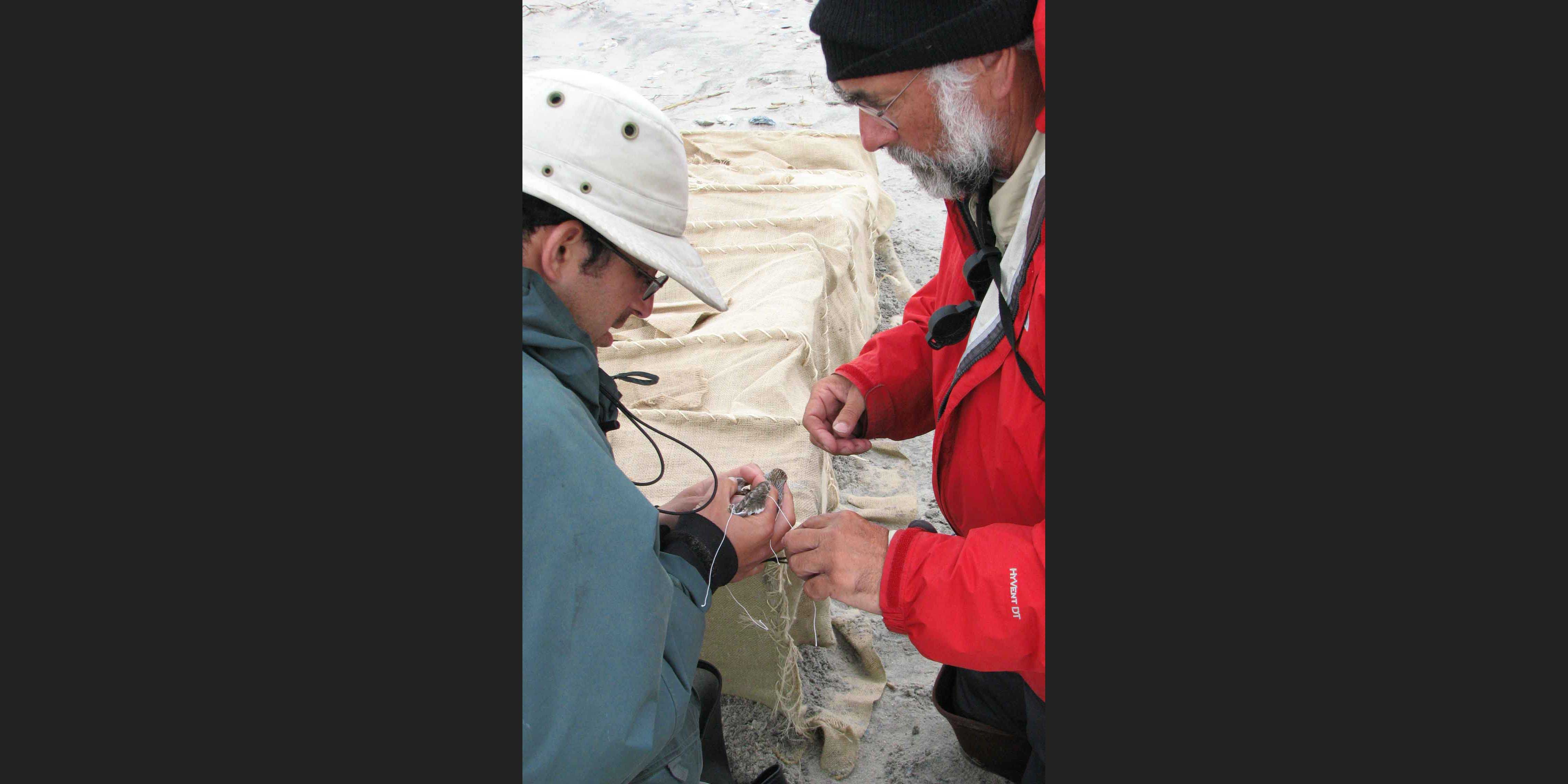The Red Knot's Life Cycle Epitomizes the Heart of Sustainability
May 15, 2011

The microcosm can reflect the macrocosm because everything is connected; sometimes it just takes scientists a while to figure out how in the scheme of the larger ecosystem. By understanding natural systems, we begin to know how to live sustainably in an ever-changing landscape.

A team of researchers, field technicians, and graduate students led by Professor Jim Fraser and Assistant Professor Sarah Karpanty in the college’s Department of Fish and Wildlife Conservation has been studying one piece of the puzzle — a robin-size shorebird called the red knot.
The red knot was named a candidate for Endangered Species Act protection in 2006 and is currently considered seriously imperiled. In fact, its crashing population is one of the most rapid declines of any bird species. Fraser and Karpanty’s team has been researching this migratory bird for the past five years and hopes for continued funding to find out why the knot population is spiraling downward.
One-quarter of the world’s red knots migrate from their wintering grounds in southern Chile to their breeding grounds in the Arctic. They stop only once or twice en route before reaching the barrier islands of Virginia, where they spend a few weeks in May before continuing their journey. They arrive in Virginia emaciated; on the barrier islands, they feed and rest. “They must at least double their body weight in frenzied feeding before they take off for the Arctic, in order to successfully reach their nesting areas and have their young,” explained Karpanty.
While many knots come to Virginia’s barrier islands, where they feed on tiny clams called donax, others continue on to the Delaware Bay to feed on horseshoe crab eggs before continuing on to the Arctic. Near the end of summer after the breeding season, the knots make the 9,000-mile journey back to South America, stopping over at various places to rest up along the way.
Fraser and Karpanty’s team uses cannon-netting to capture birds feeding along the shoreline of the barrier islands. The researchers carefully weigh them and measure their beaks, and then tag them for radio tracking.
“In the olden days, the red knots were shot for fun and food,” Fraser recounts. “But when it became obvious to people that this was not a good thing to do, knot conservation began as one of the earliest efforts to preserve birds.” Inadequate food supplies at Virginia’s barrier islands and the Delaware Bay, coastal develop- ment, and changing climate are factors that Fraser believes may be reducing the red knot population.
The red knots’ massive concentration at their traditional feeding areas during migration makes them vulnerable to pollution and loss of food supply. They spend more than 6 1/2 months flying between wintering and breeding grounds, so the knots’ sus- tainability reflects many of the same things human


Fraser’s lifetime conservation work with eagles, piping plovers, red knots, and other birds qualified the accom- plished wildlife scientist to receive a $4 million grant this year along with co-investigators Karpanty and Research Assistant Professor Dan Catlin to evaluate the effects
of the Gulf of Mexico oil spill on piping plovers, another threatened species of shorebirds.
“We have to understand the effects of human activities on shorebird population dynamics if we are to sustain our shorebird populations” Fraser said, “but beyond that, we must develop the collec- tive will to conserve the few remaining fragments of wild, unpolluted coastline and to restore damaged shores. It is only by combining science with the will to conserve that we can ensure that our grandchildren and their grandchildren will witness the incredible spectacle of shorebird migration and hear the songs of shorebirds nesting on our beaches.”



